ULA Delta IV Heavy rocket puts on a show on its next-to-last launch (photos)

A United Launch Alliance Delta IV Heavy rocket blasted off from Cape Canaveral Space Force Base on June 22, and the launch was captured in stunning detail in photographs and video.
The launch, which took off at 5:18 a.m. EDT (0918 GMT) from Space Launch Complex-37's launch pad 37B, carried the NROL-68 mission on behalf of the National Reconnaissance Office (NRO).
A YouTube video from United Launch Alliance (ULA) shows highlights of the preparation for the mission, the fiery moment of ignition and the stunning sight of the three RS-68 engine cores of the expendable heavy-lift launch vehicle providing around 705,000 pounds of thrust each to hoist the Delta IV Heavy to orbit.
Related: Delta IV Heavy rocket launches US spy satellite on penultimate mission (video)
ULA shared some stunning images of the Delta IV Heavy NROL68 launch on its Twitter feed. One image showed flames erupting from the case of the rocket.
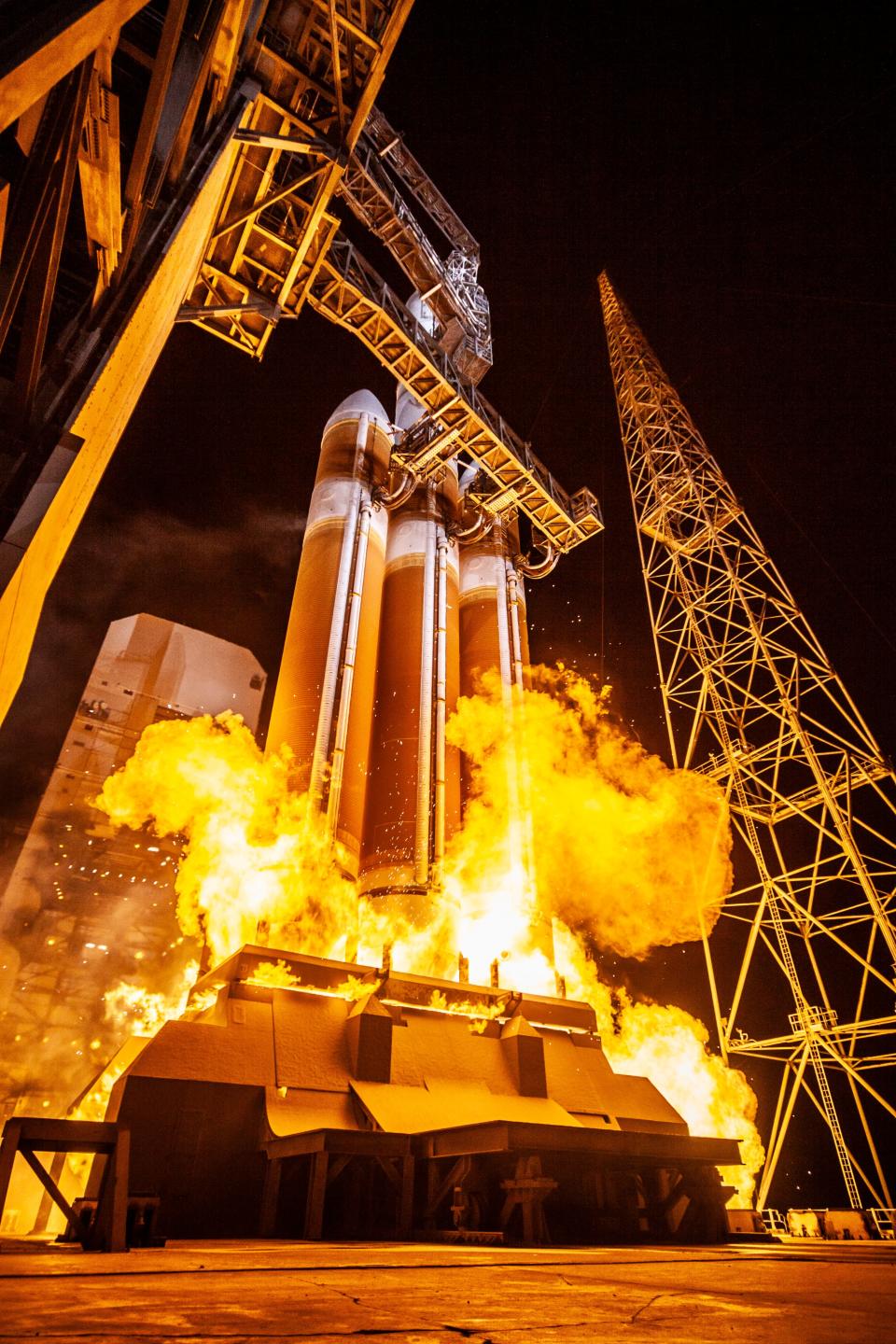
A second image shared by ULA shows an extreme close-up of exhaust plumes jetting from the thrusters of the rocket as it lifts off.
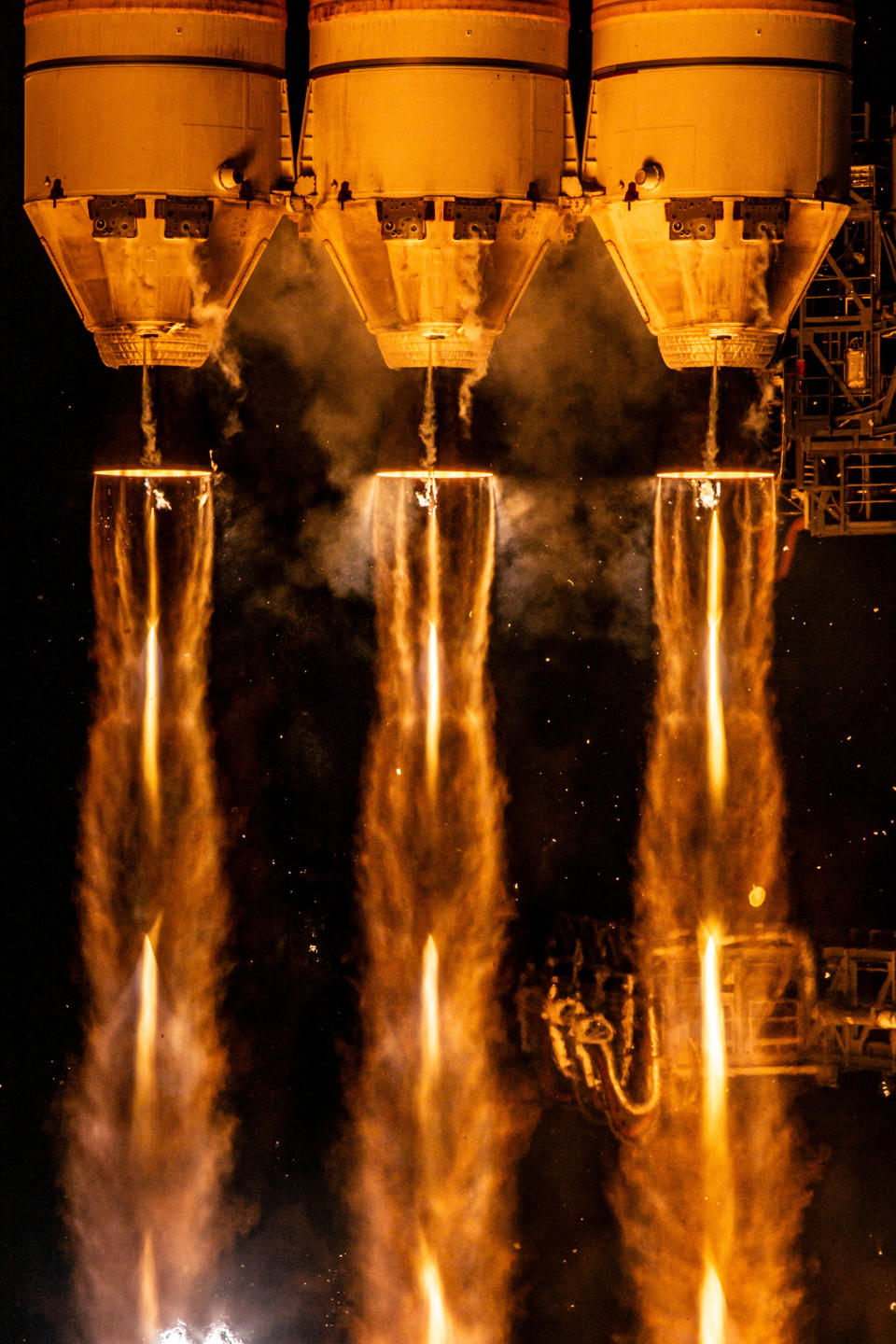
A third image shows the Delta IV Heavy creating a bright streak in the sky as it heads to orbit with a stunning burst of light at the arc's base marking the moment of ignition.
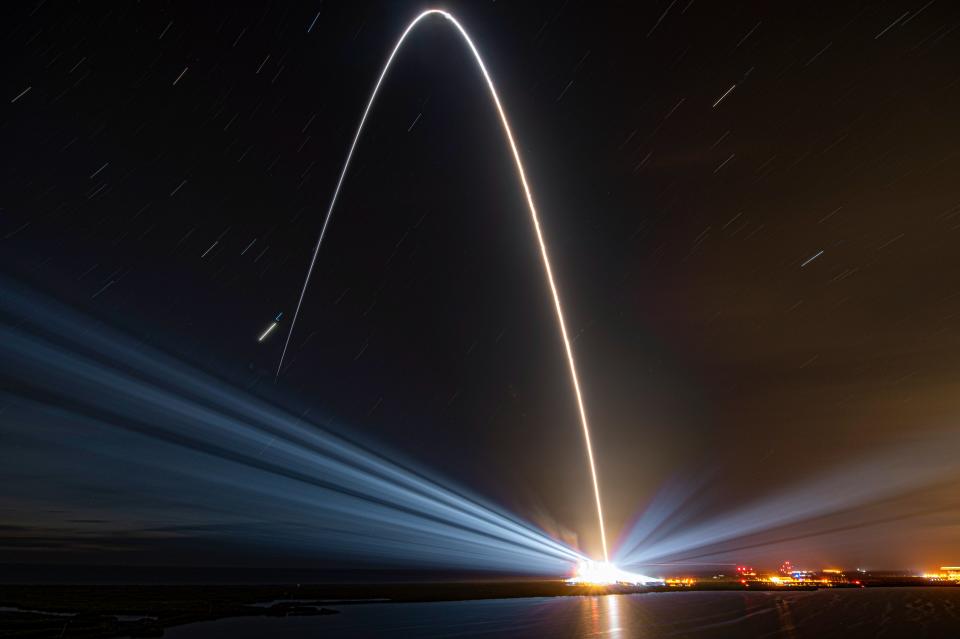
Photographer Paul Paul Hennessy also captured some impressive images of the Delta IV rocket. One, taken on July 21, shows the tremendous scale of the 232-foot (70.7 meters) tall ULA launch vehicle and the calm before the storm as it sits on launch pad 37B awaiting blast off.
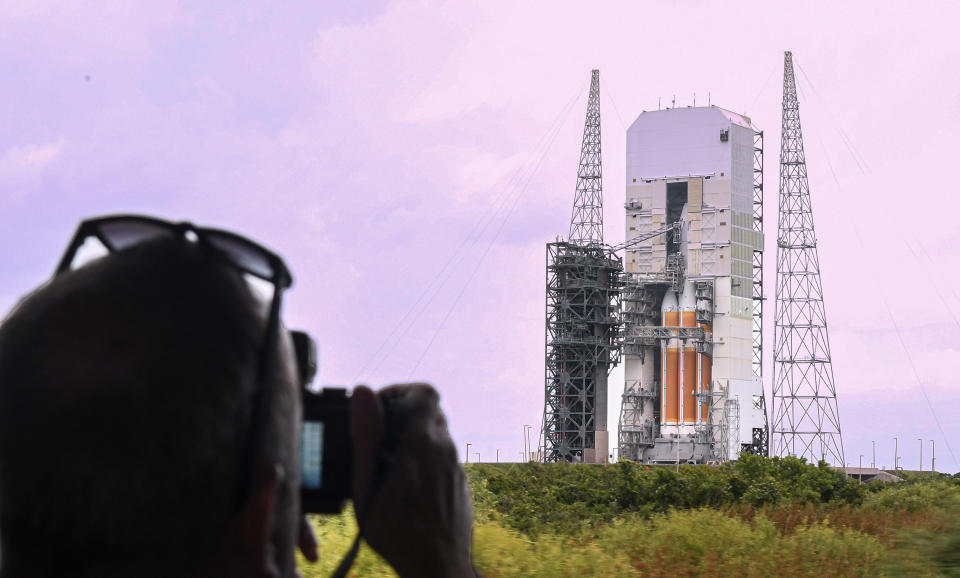
Another image from Paul Hennessy, taken the day later on June 22, shows the moment of lift off with the full rocket seen behind its launch complex.
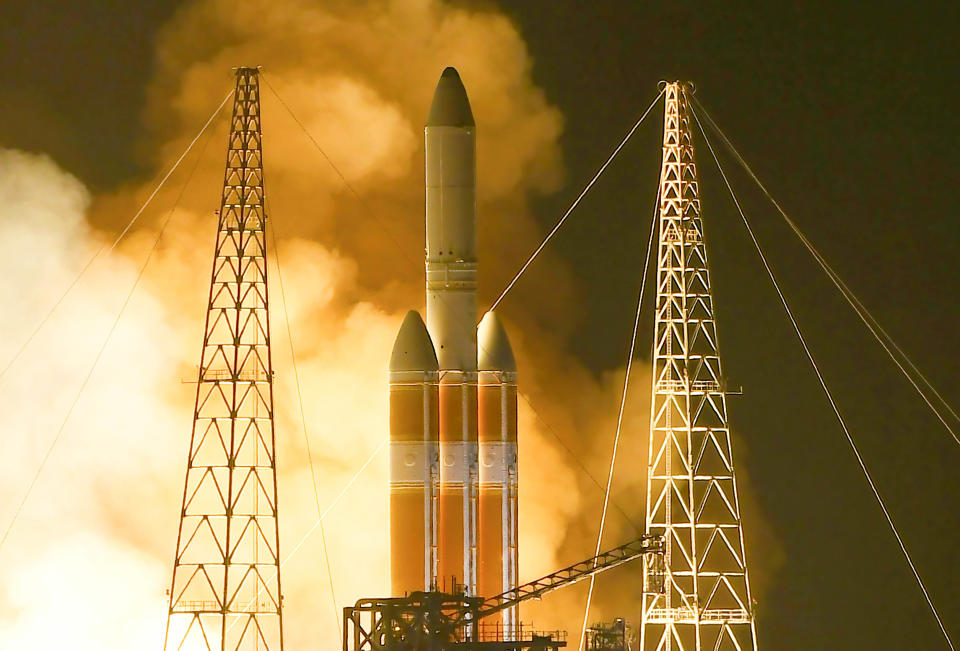
Another image posted on the ULA blog showing the moment of the launch sees the Delta IV framed on either side by a corridor of structures, scaffolding, and gantries that form the infrastructure needed to ensure a successful launch.
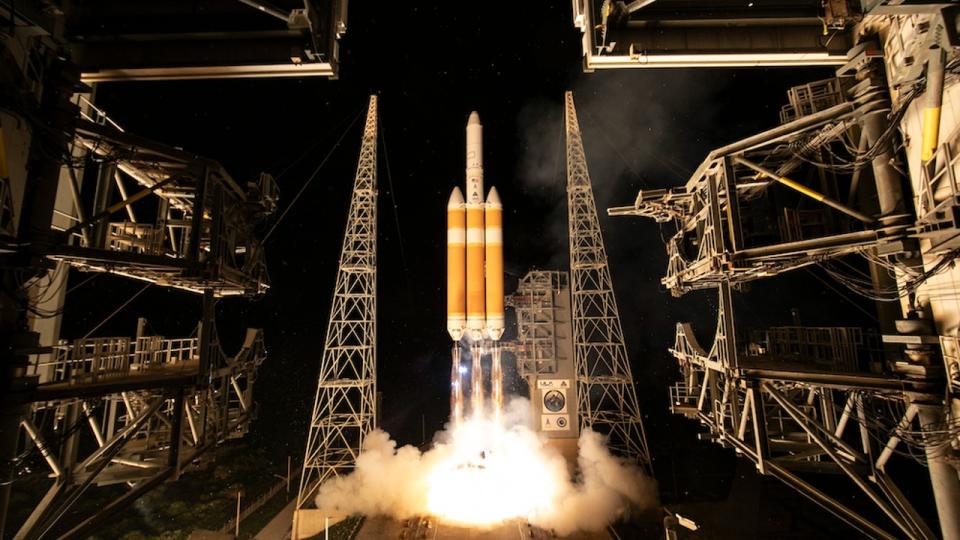
The same blog points out that the June 22 flight of the Delta IV represents the 156th launch for ULA, with a 100% success rate.
ULA described the flight profile of the Delta IV Heavy mission, explaining that the rocket reaches Mach 1, the speed of sound, around 1 minute 20 seconds after launch.
After 3 minutes and 56 seconds, two of the RS-68 boosters are cut off, and the port and starboard boosters are jettisoned two seconds later. The third booster shuts off 5 minutes and 36 minutes after launch, and the first and second stages separate six seconds after this. The main engine, a single RL10C-2–1 engine that produces 24,750 pounds of thrust, kicks in at 5 minutes 55 seconds into the flight, and the payload is jettisoned at around 6 minutes 37 seconds after launch.
RELATED STORIES:
— ULA delays 1st launch of Vulcan Centaur rocket again
— United Launch Alliance: Combining the forces of two aerospace giants
— ULA test-fires new Vulcan Centaur rocket on the launch pad for 1st time (video)
The purpose of the launch was to get NROL-68, a classified national security payload designed, built, and operated by the NRO, to space.
"When the United States needs eyes and ears in critical places where no human can reach — be it over the most rugged terrain or through the most hostile territory — it turns to the NRO," ULA wrote. "The NRO is the Intelligence Community agency responsible for developing, acquiring, launching and operating America's reconnaissance satellites, as well as operating associated data processing facilities in support of national security."

